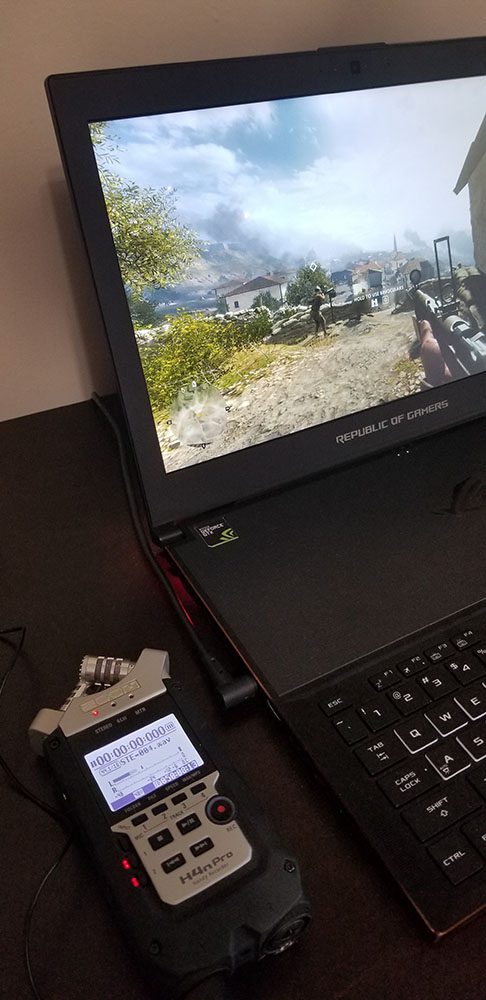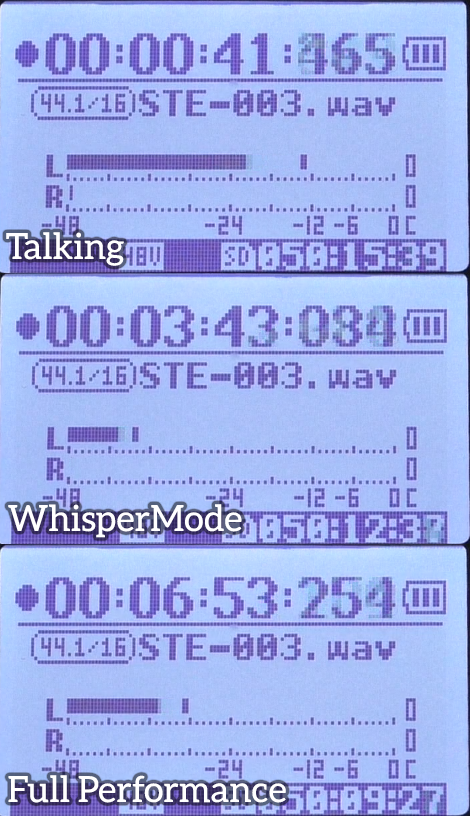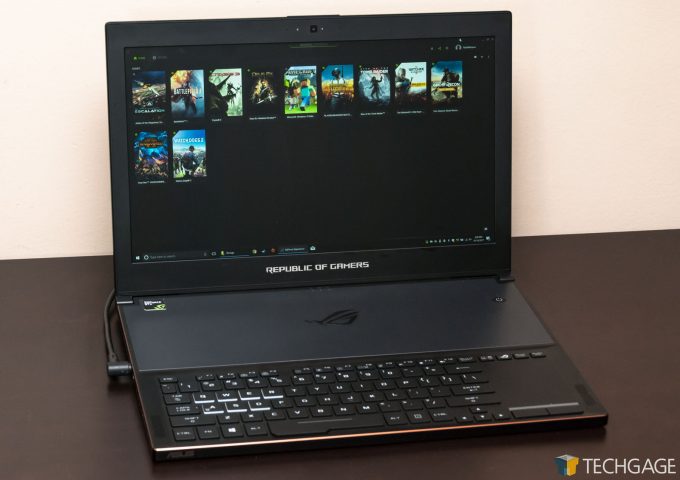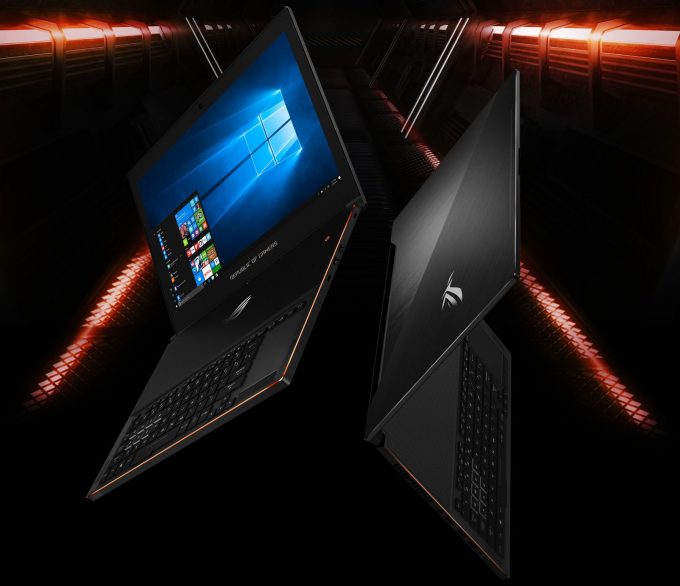- Qualcomm Launches Snapdragon 4 Gen 2 Mobile Platform
- AMD Launches Ryzen PRO 7000 Series Mobile & Desktop Platform
- Intel Launches Sleek Single-Slot Arc Pro A60 Workstation Graphics Card
- NVIDIA Announces Latest Ada Lovelace Additions: GeForce RTX 4060 Ti & RTX 4060
- Maxon Redshift With AMD Radeon GPU Rendering Support Now Available
Testing NVIDIA’s WhisperMode On ASUS’ Zephyrus Gaming Notebook

Are you tired of your family and friends telling you to GTFO because your notebook sounds like a blender? NVIDIA’s WhisperMode comes to the rescue. With promises of dramatically reduced noise in exchange for fixed framerates, WhisperMode-equipped notebooks, like the ASUS Zephyrus, can remain beautiful and thin – while being gaming powerhouses. Let’s dig in.
Page 1 – Introduction, A Look At Power, Temps & Noise
I think I speak for most people when I say, “noise sucks”, and I’m not talking about the kind of noise a desk fan is going to produce. No – I’m talking about the kind of noise that a powerful graphics card in a limited chassis could produce, annoying either yourself, or other people in the room.
We learned about NVIDIA’s solution to this whole notebook noise problem this past summer, with the introduction of “WhisperMode”. This is a simply-named feature that tackles a tough challenge: delivering quality gameplay and some peace and quiet (relatively, at least).
Let’s be honest; when we think of gaming on a laptop, noise is pretty much expected. With WhisperMode, NVIDIA says that doesn’t have to be the case, as long as you are willing to make some compromises. In this case, that means reduced graphical fidelity, and of course, decreased framerates.
On the surface, WhisperMode may seem like a simple enough technology, but in actuality, there are many pieces that come together to make it work as well as it does. WhisperMode doesn’t just throttle frames; it paces them to optimize the 40 or so frames each second (it varies – more on that later) that the user will see. Ultimately, because that pacing exists, gameplay will appear smooth and consistent, something G-SYNC can enhance further.
While using WhisperMode will naturally reduce a notebook’s power consumption, cutting back a few watts isn’t really the goal. Instead, NVIDIA wants to deliver the best possible blend of quality and performance to complement a quiet-running notebook. That also means that the notebook will run cooler, which is going to be nice for notebooks the size of ASUS’ Zephyrus, which pack a powerful GPU in a small frame.
A (Quick) Look At ASUS’ Zephyrus Gaming Notebook
With the Zephyrus closed, it doesn’t really look like a gaming notebook. It’s slim, sleek, and perhaps even professional, more akin to an ultrabook, if the Republic of Gamers logo doesn’t detract from it. Impressively, this laptop’s mere <0.70″ thick body houses a GeForce GTX 1080 under-the-hood – or rather, a special variant called Max-Q.
To give an immediate idea of how powerful this notebook is, our full-fledged GPU test bed with overclocked 10-core processor achieves a score of 22,000 in 3DMark’s 1080p Fire Strike test, using the GTX 1080. This notebook’s GTX 1080 Max-Q Design GPU delivers a score of 14,000. That puts it in territory between the GTX 1060 and GTX 1070 desktop chips, though with my testing, I’d say it’s closer to GTX 1070 performance overall.
In layman’s terms, this notebook’s GPU isn’t going to have any trouble playing any modern game at 1080p. At full detail, I hit (spoiler alert) 107 FPS in Battlefield 1, and 90 FPS in Rise of the Tomb Raider. For a notebook a third the width of a PlayStation 4 Pro, that’s pretty damn impressive.
As for the actual notebook itself, this is without question one of the most unusual models I’ve come across, and not to mention one of the most beautiful, with its bronze accents and brushed aluminum finish.
The biggest eye-catcher with the Zephyrus is that its keyboard and touchpad are pulled to the front of the working area, rather than kept to the back like the overwhelming majority of notebooks. My thoughts on this are really up-in-the-air. I don’t mind the design, but I am not entirely sure I gain anything from it, either. One thing I can say is that the touchpad used here is the best I’ve ever laid a finger on (yes, really)… super slick, and super precise.
I’ll have more thoughts on the laptop in the Final Thoughts, but for now, it’d be a good idea to tackle one of the most important bits of an article for WhisperMode: power, temps, and noise.
Power, Temps & Noise
Since this article is focused more on WhisperMode than the GPU, I’m going to kick things off with a look at power, noise, and temperatures – in lieu of performance (that will come later). Unfortunately, I don’t have a sound level meter on hand, and I seem to have misplaced my anechoic chamber anyway (pesky things), so please bear with me for some unorthodox testing procedures.
Let’s kick things off with power, because that can help shape how you interpret the rest of the results. With the laptop plugged into a Kill-A-Watt, I recorded the average power used during each one of the benchmarks tested. Since the Kill-A-Watt itself can’t record averages for me, I recorded the output with a camera to review after-the-fact in slow motion (which is just as tedious as it sounds).
I should note that for this WhisperMode testing, the mode itself being enabled wasn’t enough. I also used the optimized settings provided by GeForce Experience, which is another element that helps optimize performance / noise goals.
| Full Performance | WhisperMode | |
| 3DMark | 141W | 110W |
| Battlefield 1 | 159W | 93W |
| Deus Ex: Mankind Divided | 148W | 114W |
| Ghost Recon Wildlands | 159W | 115W |
| Rise of the Tomb Raider | 163W | 99W |
| Watch Dogs 2 | 160W | 98W |
| Average wattage over the course of the benchmark as measured with a Kill-A-Watt. | ||
In many ways, these results are not surprising at all – of course wattage is going to sky-rocket when the GPU becomes uncapped. It just makes sense. What surprised me, though, was that one of the best-looking shooters on the market, Battlefield 1 became the least power-hungry game in the lineup. This is despite the ‘full performance’ configuration putting the game in line with the others on the power draw front.
While looking at a table of numbers can’t tell you much about noise, it doesn’t take much knowledge of thermals to understand that a notebook trying to expel an additional 60% worth of heat is going to create quite a bit of noise. With the reduced load comes lower temperatures as well.
Note that for the results to be generated below, AIDA64’s latest available version was used to log each value. WhisperMode’s testing had a slight advantage of a room temp 1.3°C lower than Full Performance’s 21.8°C, but I don’t expect a grand change from that difference alone (the room temp is not moderated so it fluctuates to begin with). If only NVIDIA sent this to me a month from now; I’d be able to test it in the frigid cold!
| Full Idle |
Full Peak |
Whisper Idle |
Whisper Peak |
|
| CPU | 46°C | 87°C | 37°C | 79°C |
| CPU Package | 47°C | 91°C | 38°C | 80°C |
| PCH | 42°C | 63°C | 34°C | 58°C |
| GPU | 42°C | 78°C | 38°C | 70°C |
| Recorded with AIDA64 5.92. Tested in 21.8°C (WM) and 23.1°C (FP) ambient temps. | ||||
On one hand, I’m not surprised that WhisperMode runs the notebook’s components at a much cooler temperature, but I am a bit surprised that even at full-tilt, the GPU didn’t exceed 78°C. Generally, notebook parts can run hotter than their close desktop competition, but in this case, the desktop GTX 1080 peaks higher than this Max-Q variant.
And now, it’s onto a look at noise.
As mentioned before, I don’t have a proper sound level meter nor a really silent room to do this kind of testing in. I do, however, have a pro recorder that’s extremely sensitive to sound (this article reminded me of that). So, with a video recorder, I recorded the sound recorder to record these results (yo dawg).

With the laptop placed on a desk with no obstructions on any side, I placed an omni-directional lavalier mic on a winter hat (sigh…) behind the notebook. Because I couldn’t get an accurate reading for completely silent, I don’t have a result for that. With these results, WhisperMode gameplay wasn’t silent, but it was far from distracting. I think “Whisper” is truly accurate here, and for what it’s worth, my actual whispering (standing in front of the laptop) hit a higher peak than WhisperMode did.

As for talking at a normal room volume, that peaks at a far higher level than even the notebook’s high performance mode, which in itself is a lot more noticeable than WhisperMode. Now, that all said, there are some things to be aware of.
WhisperMode is meant to deliver as quiet a gaming experience as possible. It’s not meant to be silent, and due to the nature of the hardware we’re dealing with, I couldn’t imagine a notebook being more silent than what I’ve experienced with ASUS’ Zephyrus. Everything else humming away in the room I did most of my testing in, was much louder than the notebook itself. That includes the NAS box sitting under the desk.
Throughout my testing, there were occasions when the fan would ramp up a bit during WhisperMode testing, which of course was noticeable. But even at its peak, it wasn’t at all offensive to the ears, and it was understandable why pure silence just wasn’t going to happen. To draw a console parallel again, this is a notebook that’s 1/3rd the thickness of a PlayStation 4 Pro, removing heat completely silently is just not going to happen.
When WhisperMode did get to its loudest point, it seemed to be on par with the average noise generated with the feature turned off. One important difference is that WhisperMode’s noise would actually go back down after a while, whereas uncapped gaming is going to keep the laptop generating a noticeable amount of fan noise during your gaming.
I’ll talk a bit more about some of these points in the Final Thoughts section; but first, let’s dive into some performance results and see what the ASUS Zephyrus, and its WhisperMode feature, can deliver.
Support our efforts! With ad revenue at an all-time low for written websites, we're relying more than ever on reader support to help us continue putting so much effort into this type of content. You can support us by becoming a Patron, or by using our Amazon shopping affiliate links listed through our articles. Thanks for your support!







